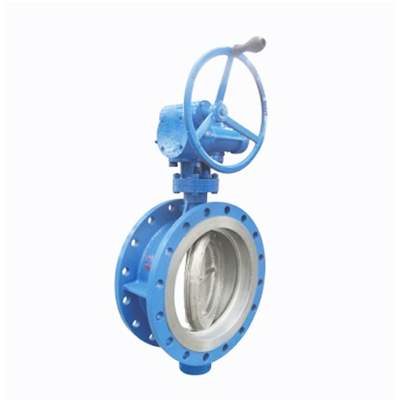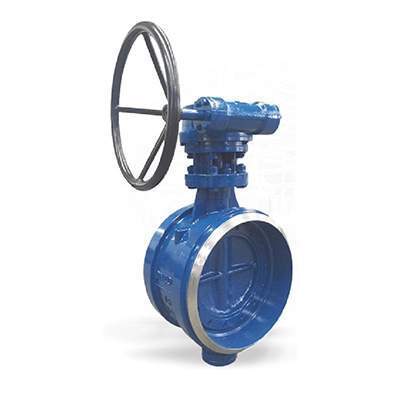Welcome to My Blog!
Before we dive into the content, if you’re interested in our products or have any questions, please feel free to visit our Contact Us page on the website. Our team is ready to assist you with inquiries, orders, or any support you may need.
Now, let’s get started on our journey together. I hope you find the content here insightful, engaging, and valuable.
Butterfly valves are one of the most widely used flow control devices in modern piping systems. Known for their compact design, quick operation, and cost-effectiveness, they are essential in industries such as water treatment, HVAC, chemical processing, and power generation.
This article will help you understand what a butterfly valve is, how it works, its main types, advantages, and common applications — so you can make an informed decision when selecting one for your project.
What Is a Butterfly Valve?

A butterfly valve is a quarter-turn valve used to regulate, start, or stop the flow of fluids. It consists of a circular disc or plate mounted on a rotating shaft. When the disc is turned parallel to the flow, the valve opens fully; when it is turned perpendicular, the valve closes.
The name “butterfly” comes from the shape of the disc, which resembles a butterfly’s wings when opened. These valves are lightweight, simple in construction, and easy to operate — making them ideal for large-diameter applications where space and cost are important factors.
Key Components
A typical butterfly valve includes:
- Body: Holds the internal parts and connects to the pipe.
- Disc: The rotating element that controls fluid flow.
- Stem: Connects the disc to the actuator or handle.
- Seat: Provides a tight seal to prevent leakage.
- Actuator or Handle: Enables manual or automatic operation.
How Does a Butterfly Valve Work?
Butterfly valves operate on a quarter-turn mechanism — meaning the disc rotates 90 degrees from fully open to fully closed. When open, the disc aligns with the direction of the flow, allowing maximum passage. When closed, the disc blocks the flow completely.
Because of this simple motion, butterfly valves can be operated manually using a lever or gear, or automatically using electric, pneumatic, or hydraulic actuators. Their fast response time and low torque requirements make them highly efficient in automated systems.
Main Functions and Advantages of Butterfly Valves
Butterfly valves serve both on/off and throttling (flow regulation) purposes. Some key advantages include:
- Compact and lightweight: Requires less installation space than gate or globe valves.
- Quick operation: Only a quarter-turn needed for full control.
- Low pressure drop: Minimal obstruction to flow when open.
- Cost-effective: Simple design results in lower production and maintenance costs.
- Versatile: Suitable for liquids, gases, and even semi-solid slurries.
These characteristics make butterfly valves one of the most economical choices for large-scale flow control systems.
Different Types of Butterfly Valves
Butterfly valves come in several configurations, each suited for specific pressure, temperature, and media conditions.
Concentric (Resilient-Seated) Butterfly Valve
This is the most common type, where the disc and stem share the same centerline. It’s best for low-pressure applications such as water supply and HVAC systems.
Double Offset (High-Performance) Butterfly Valve
In this design, the stem is offset from both the disc and the centerline of the pipe. This reduces friction during operation and improves sealing performance, making it ideal for higher pressure and temperature environments.
Triple Offset (Metal-Seated) Butterfly Valve
Here, a third offset provides a cone-shaped sealing surface, eliminating contact between the seat and disc when opening or closing. These valves are used in demanding applications like power generation and oil & gas systems.
Connection Styles
- Wafer type: Fits between two pipe flanges and is held by bolts.
- Lug type: Has threaded inserts for easy installation and removal.
- Flanged type: Provides stronger connections for high-pressure service.
Butterfly Valve Materials and Design Options
Choosing the right material ensures long-term performance and compatibility with your media.
- Body Materials: Cast iron, ductile iron, stainless steel, carbon steel, PVC.
- Disc Materials: Stainless steel, aluminum bronze, nickel-plated ductile iron.
- Seat Materials: EPDM, PTFE, NBR, or metal for high temperatures.
For corrosive or high-temperature environments, stainless steel or metal-seated butterfly valves are preferred. For general water or HVAC applications, cast iron or PVC valves offer cost-effective solutions.
Common Applications of Butterfly Valves
Butterfly valves are widely used across industries due to their versatility and reliability. Typical applications include:
- Water and wastewater treatment plants – for flow isolation and regulation.
- HVAC systems – to control air or chilled water circulation.
- Chemical and petrochemical industries – for corrosive or high-pressure fluids.
- Power generation – in cooling and steam systems.
- Food and beverage processing – for sanitary and clean applications.
- Fire protection systems – due to their fast shut-off capability.
Butterfly Valve vs Other Valves — Key Comparisons
When comparing butterfly valves with other common valve types, each has unique benefits:
| Valve Type | Advantages | Limitations |
|---|---|---|
| Butterfly Valve | Compact, economical, easy to automate | Not ideal for very high-pressure throttling |
| Ball Valve | Excellent sealing, quick operation | Bulkier and more expensive |
| Gate Valve | Good for isolation | Slow operation, heavy |
| Globe Valve | Accurate throttling | Higher pressure drop |
In general, butterfly valves are preferred when space, cost, and weight are major considerations.
Installation, Maintenance, and Troubleshooting
Proper installation and regular maintenance are key to ensuring valve longevity.
Installation Tips
- Ensure correct alignment between valve and pipeline.
- Use the recommended torque on flange bolts.
- Verify disc movement before operation.
Common Problems and Solutions
- Leakage: Usually caused by worn seats or improper alignment.
- Disc sticking: May result from debris buildup or corrosion.
- Pressure loss: Caused by partially open or damaged discs.
Routine inspection and cleaning can prevent most of these issues, extending service life and maintaining efficiency.
How to Choose the Right Butterfly Valve

Selecting the correct butterfly valve depends on your system’s pressure, temperature, and fluid type. Key factors include:
- Size and pressure rating (ANSI Class 150, PN10/16, etc.)
- Material compatibility with the fluid
- Operating mechanism – manual, electric, or pneumatic
- Temperature and flow requirements
- Budget and maintenance needs
When in doubt, consult a professional valve manufacturer who can recommend the optimal configuration based on your application.
Conclusion
Butterfly valves offer a perfect balance of performance, affordability, and simplicity, making them a go-to solution for flow control in numerous industries.
Whether used in water systems, HVAC networks, or chemical processing, understanding the function, types, and applications of butterfly valves helps ensure you choose the right one for your system.
FAQ
What is a butterfly valve?
A butterfly valve is a quarter-turn valve that controls fluid flow using a rotating disc. It’s commonly used in pipelines for water, gas, or chemical applications.
How does a butterfly valve work?
When the valve handle or actuator rotates the disc 90 degrees, it either allows full flow (open) or blocks flow (closed). The design enables quick operation and compact installation.
What are the main types of butterfly valves?
The three main types are concentric, double offset, and triple offset butterfly valves — each offering different sealing and performance characteristics.
Where are butterfly valves commonly used?
They are used in water treatment, HVAC, power plants, chemical processing, and fire protection systems due to their versatility and reliability.
What are the advantages of a butterfly valve?
Butterfly valves are lightweight, cost-effective, easy to operate, and provide efficient flow control with minimal pressure drop.
Need Help Choosing the Right Butterfly Valve?
If you’re unsure which butterfly valve best fits your industrial or HVAC system, our valve experts are here to assist you. Contact us today for a personalized consultation and get professional advice on the ideal type, size, and material for your application.
Ensure your flow control system runs efficiently and safely—reach out now and let us help you make the right choice!
